What started as a side trip after the end of the World Cup in Russia has now become an almost two-year journey of awe and wandering in the remote lands of the Caucasus, Iran, and Central Asia. But it was in Central Asia where this project begins.
Now, I didn’t go to Russia solely to watch football matches (though I had a ticket I couldn’t make it to the match even), rather I went there because of an artist residency where I explored the theme of the Russian Orthodox Church. Being raised in a Catholic environment, with a devout upbringing, and a pious grandmother I’ve always felt close to God. So, my russian art project where I visited Orthodox Cathedrals in Saint Petersburg, which was a continuation on the theme of religion, which began with “My Grandmother Prays” series, could only be followed by my accidental, and ongoing (let’s hope coronavirus allows one day), work exploring the interiors of Mosques. And I mean accidental because I began visiting mosques after realizing how proliferative they were in Central Asia: there was always one mosque being built no matter the size of the city or the town.
Roman Catholic Cathedrals and Russian Orthodox Cathedrals resemble more than they differ (lack of benches on the Orthodox side would be the most obvious difference); however, their sumptuous interiors offer quite a contrast to the simplicity of a Mosque. But before I describe their architectural differences I have to mention that in a mosque men and women are segregated, and thus women are interdict from entering the rooms where I took these pictures. Also, it is forbidden to take pictures of the inside of a mosque so I had to learn to assimilate i.e. learn how to pray like them before I dared to take out my camera. Luckily I never encountered any hassle and I had the freedom to roam around to take from several angles; although always mindful of their ceremonies and practices.
The inside of a mosque is very plain in its layout. There’s the musalla, place for prayer, which is one open room, bare with a thick colorful carpet, white walls, cushions, and small book stands for people to read the Quran while seated on the floor. Then there’s the mihrab, which is a geometrically decorated niche or an indention in the wall that indicates the qibla, that is, the direction of the Kaaba in Mecca and hence the direction that Muslims should face when praying. And last, there’s the minbar, a wooden pulpit, standing next to the mihrab. In a mosque there is no gold, no gold frames around a glorious depictions of God or his angels or his saints; there is no golden chalice with precious stones: nothing that man would want to covet. Yet all the simplicity that lays on the ground level seems appropriate and fair when juxtapose with that which lingers up above in the ceiling, in what to me, depicts a semicircular representation of the sky painted just out of the reach of man but close enough to feel spellbound by it (at least, that is what I felt). And this is how the holy and sacred get mixed in such an ordinary space without the need to rely on worldly riches. In Islamic art the circle represents the primordial symbol of unity and the ultimate source of all diversity in creation. Standing inside a mosque and looking up at the dome, one feels as though the entire universe converged into one. Decorated with rich, intricate, geometric patters the inside of the dome stands as its own constellation system and from the center, its singularity, hangs a chandelier providing light unto the barren space that lays below.
It was this feature that prompted my admiration of the mosques and compelled me to begin the photographic series “The Heavens Inside.” Each picture is formed by number of photographs stitched together in photoshop to better capture the entirety of the inside of dome, which would have been impossible to capture with just one picture (without the need of a fisheye lens).
More info: Instagram
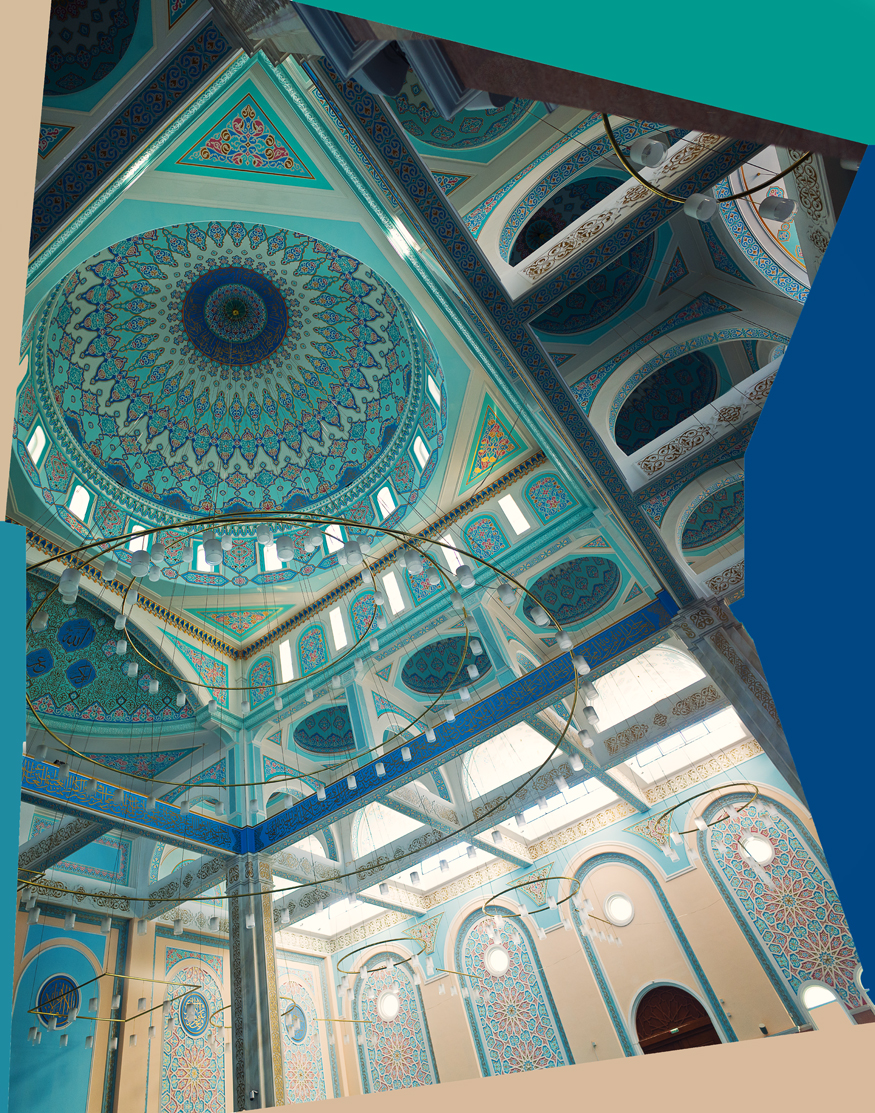
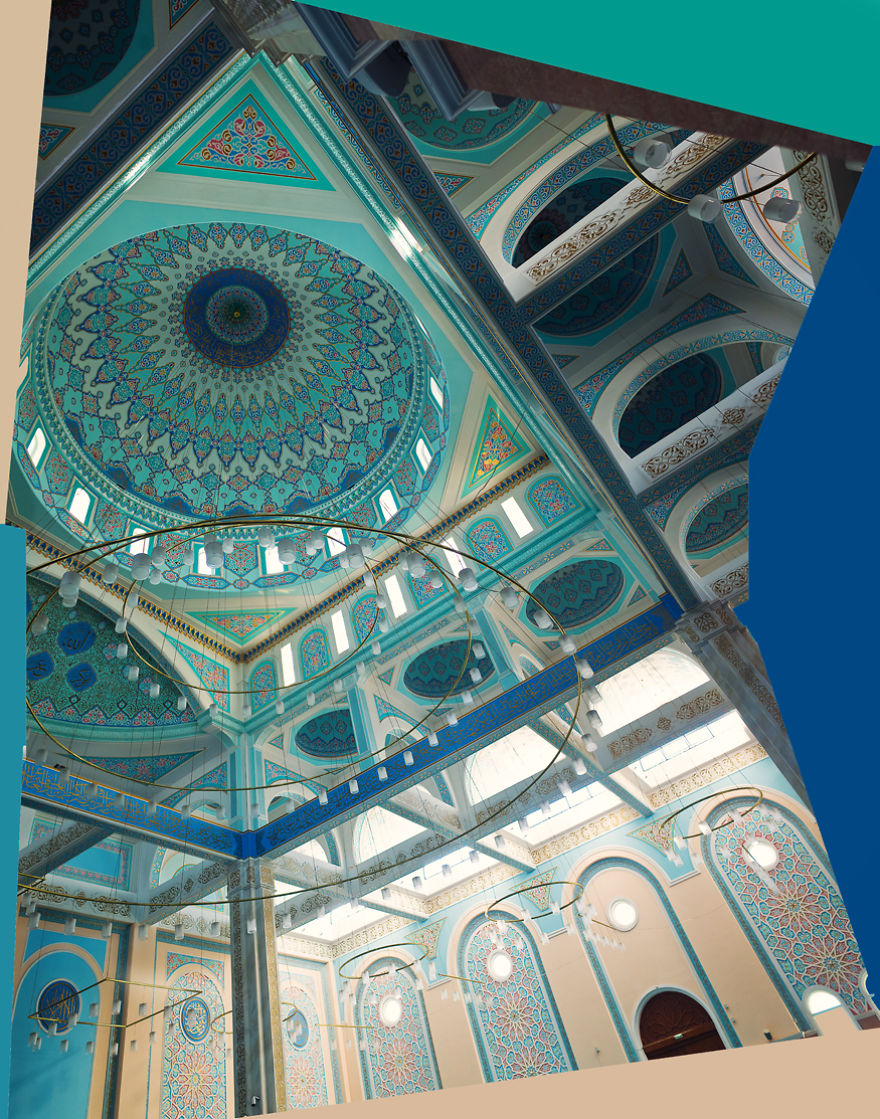
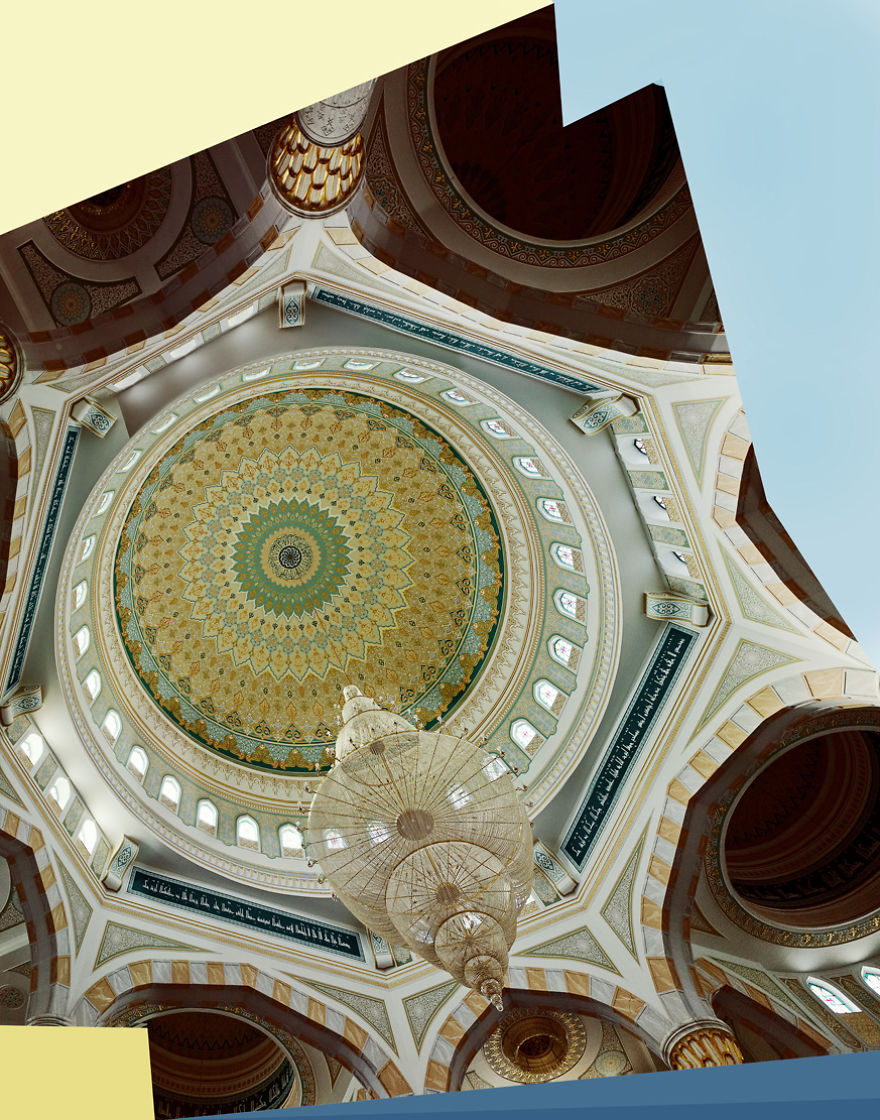
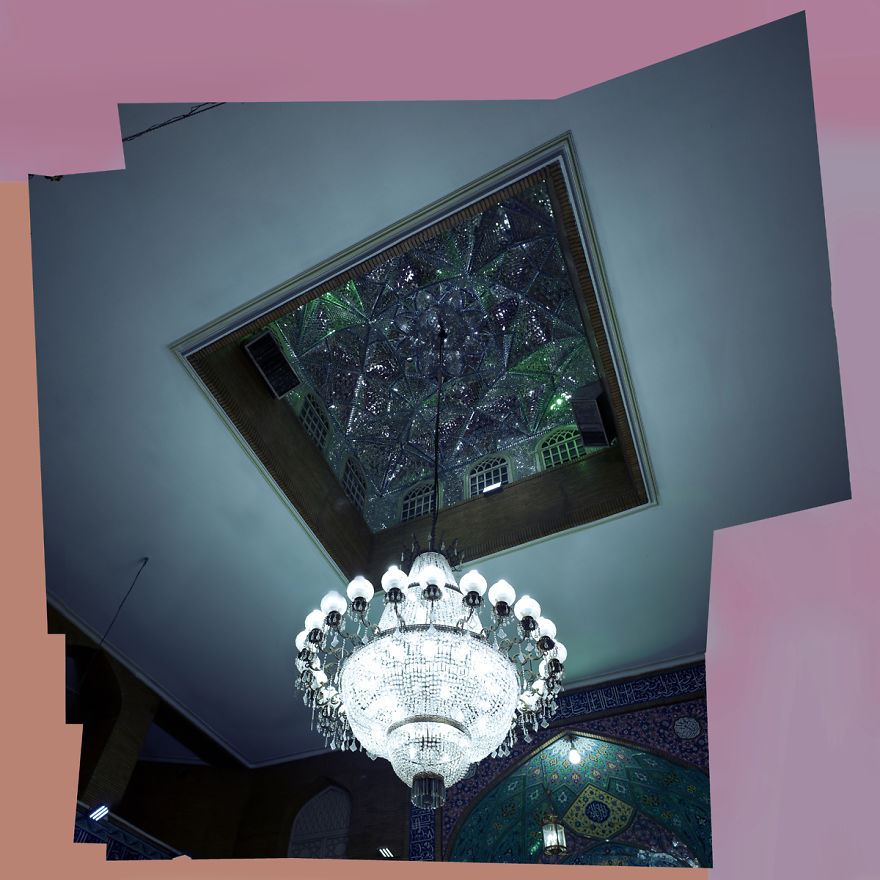
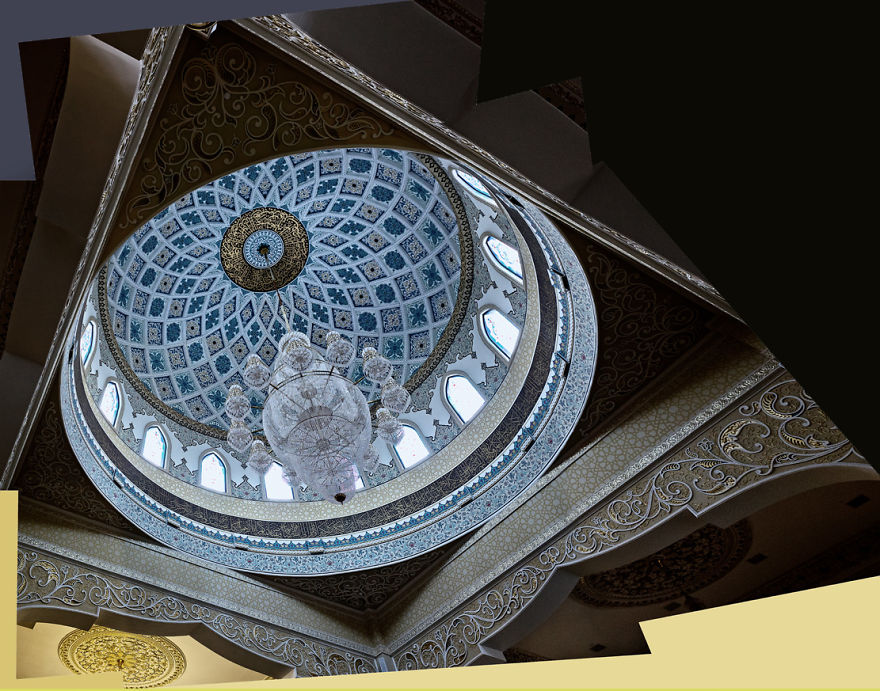
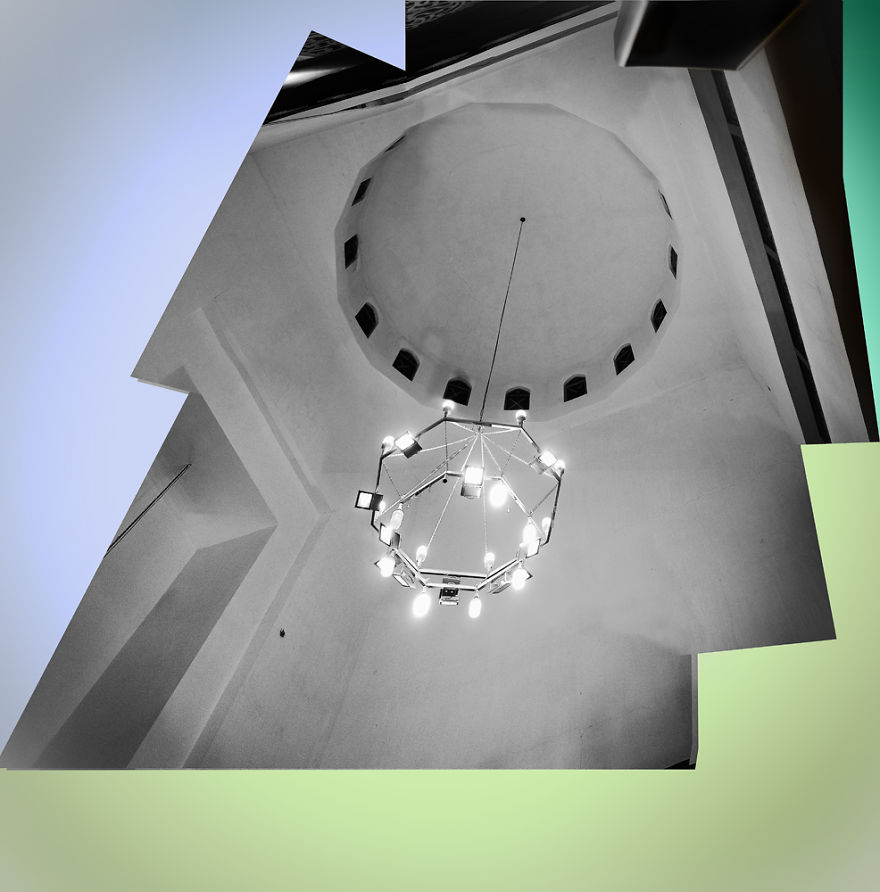
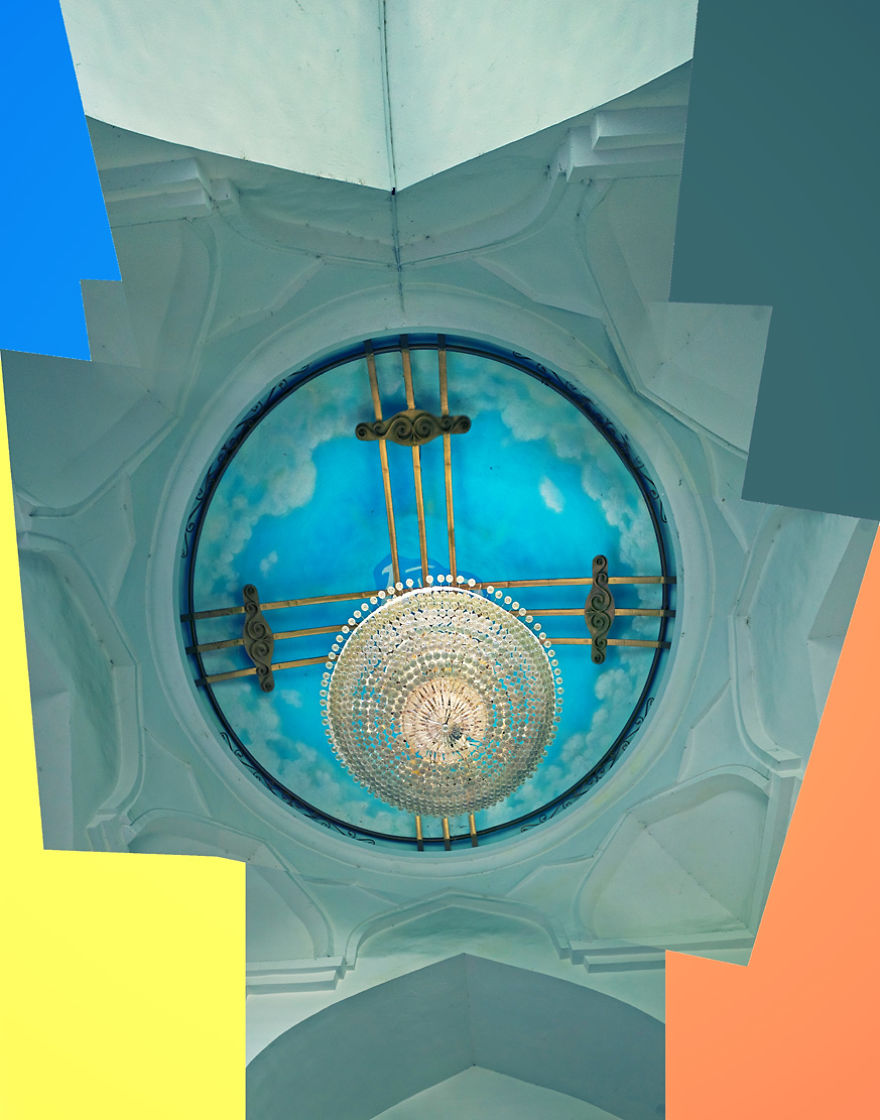
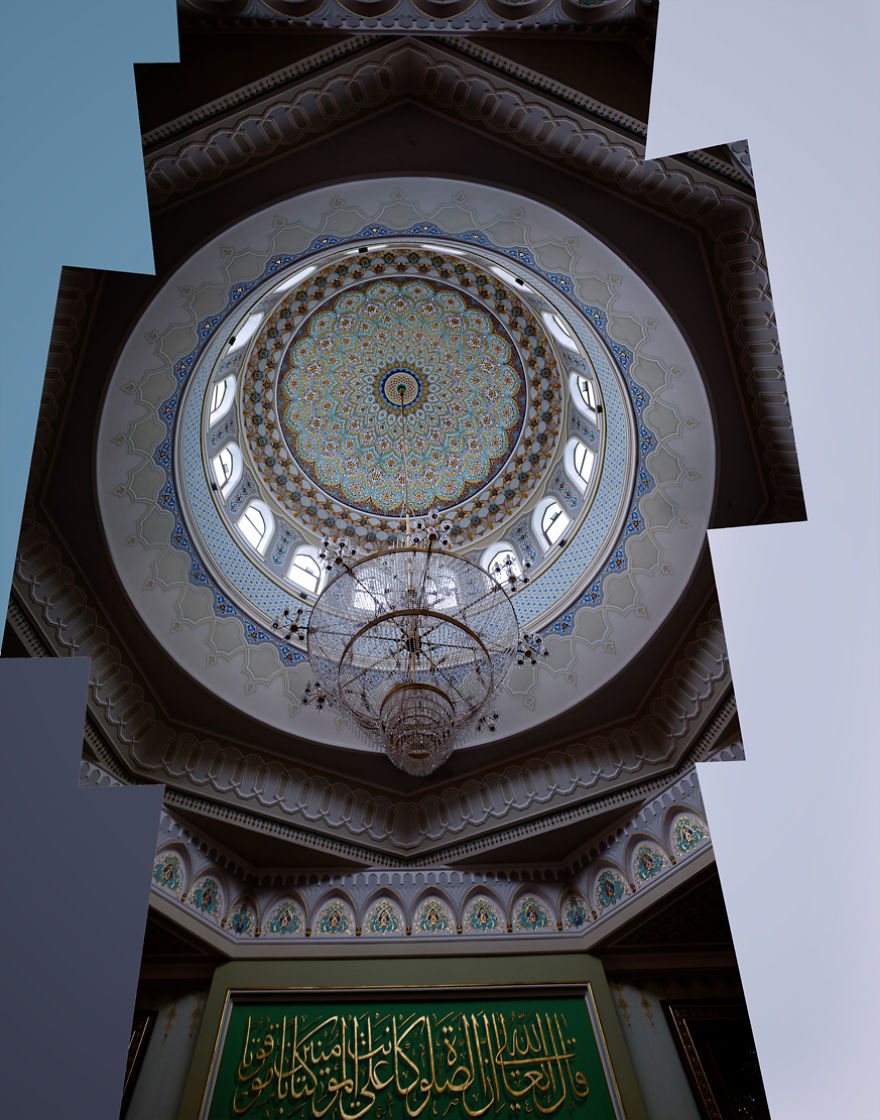
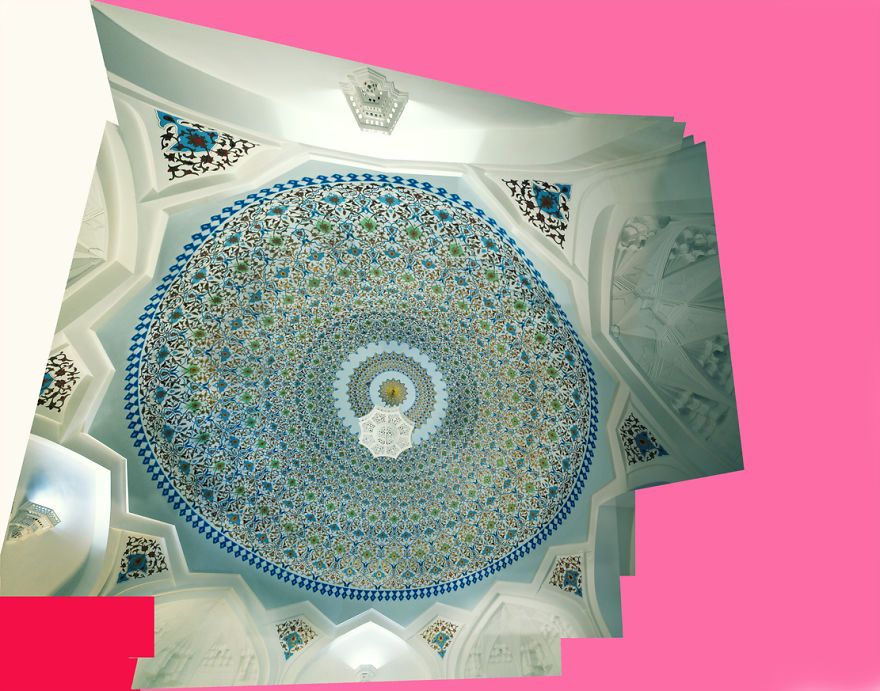
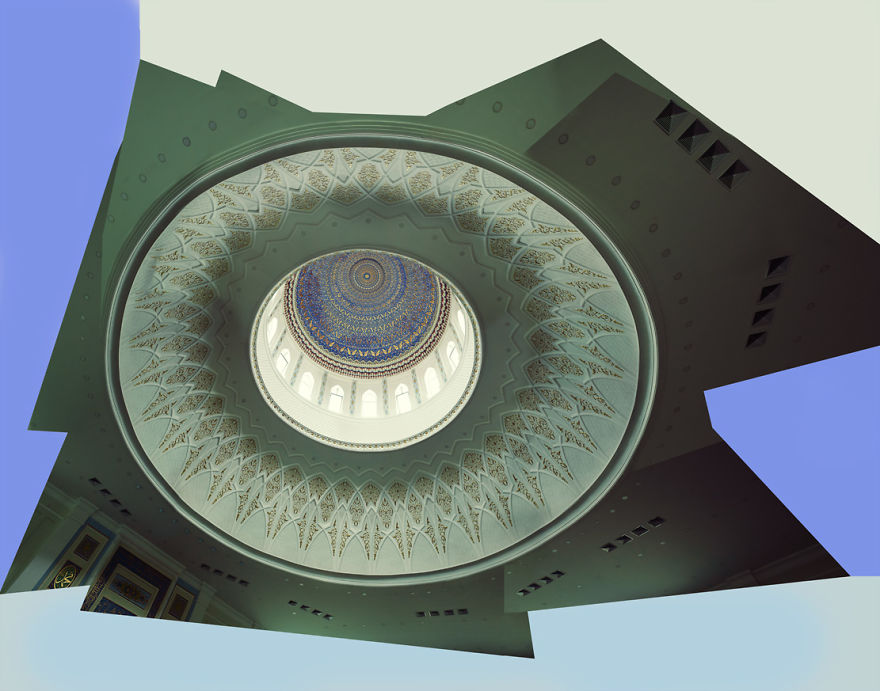
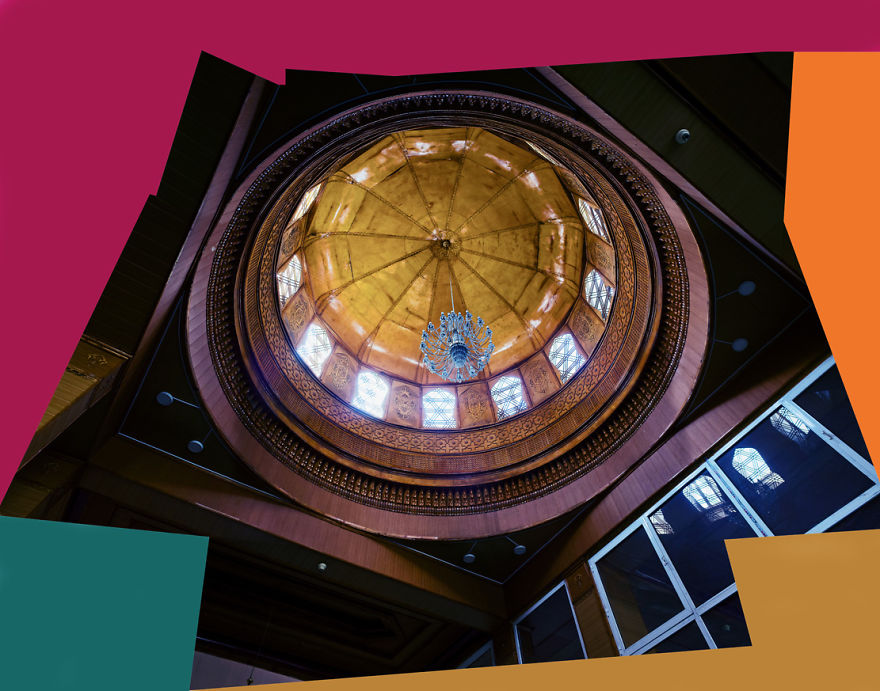
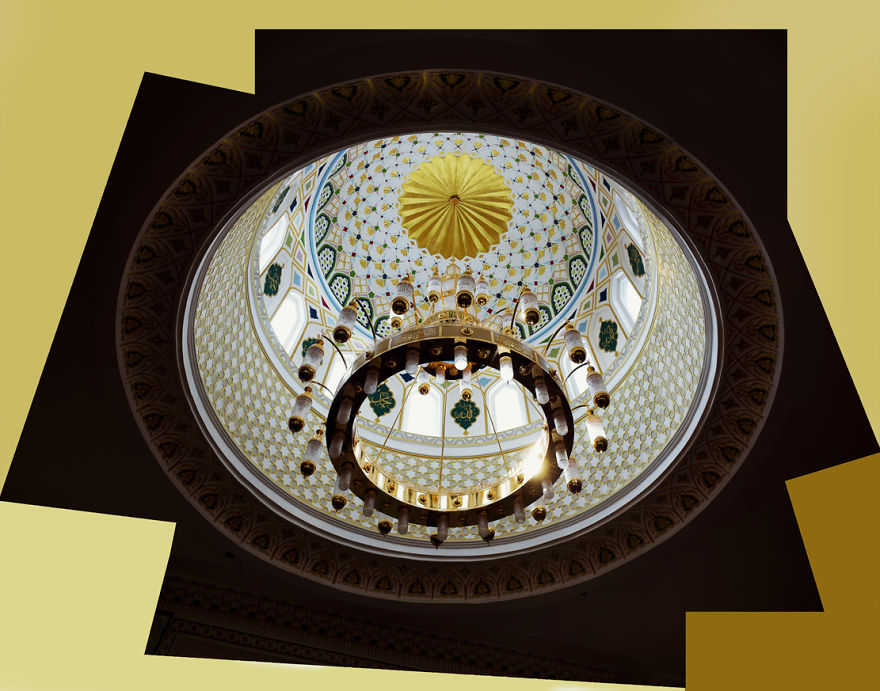
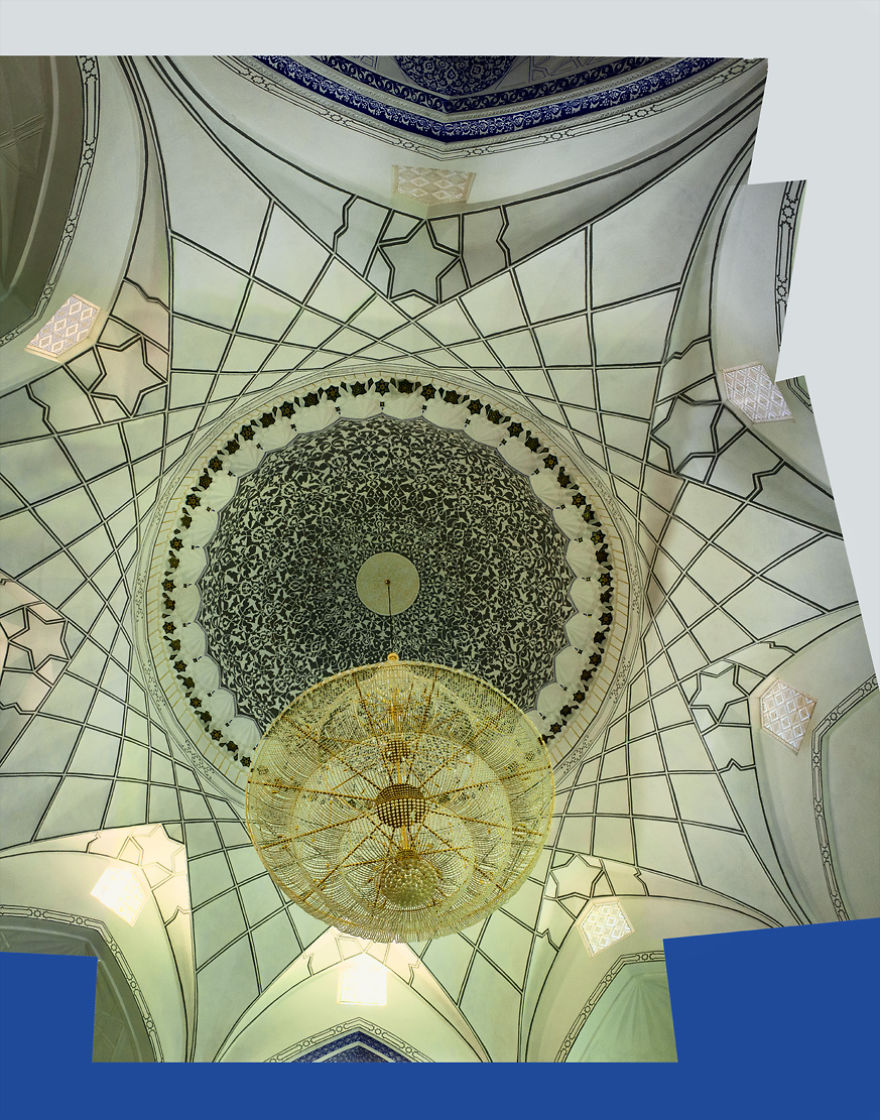
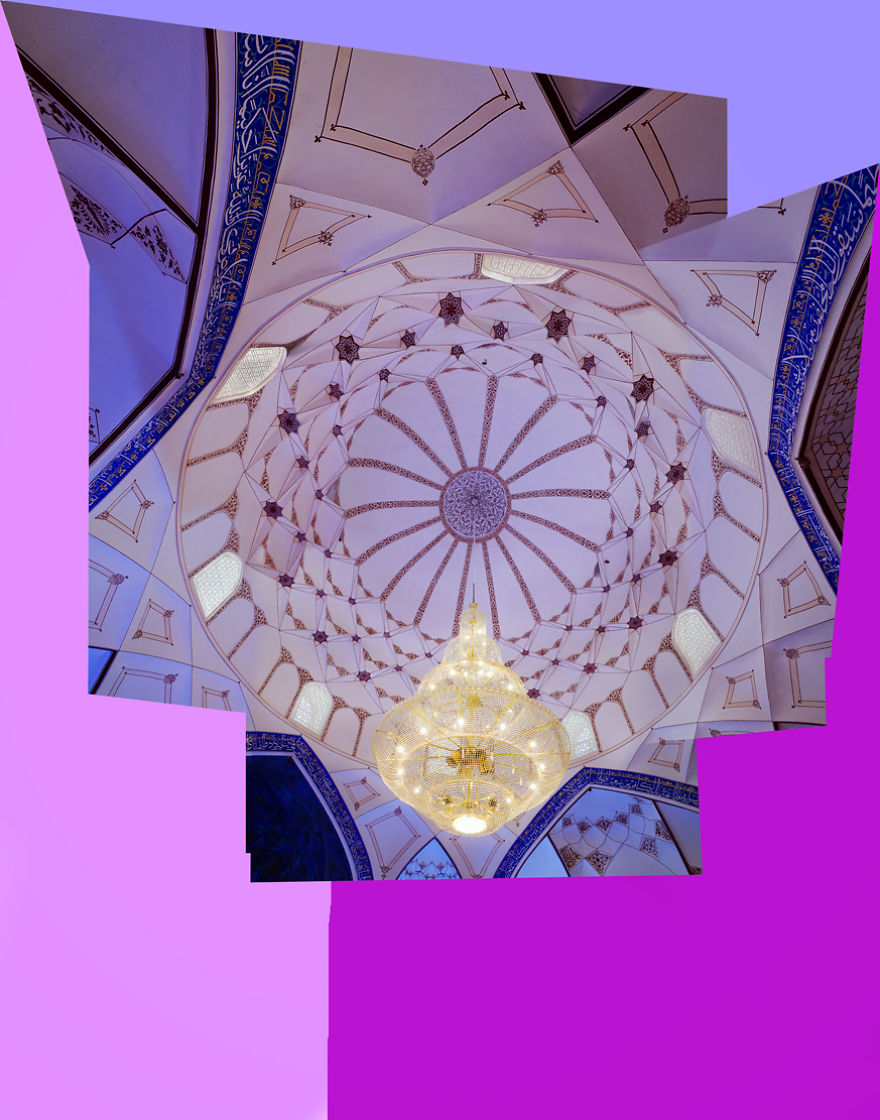
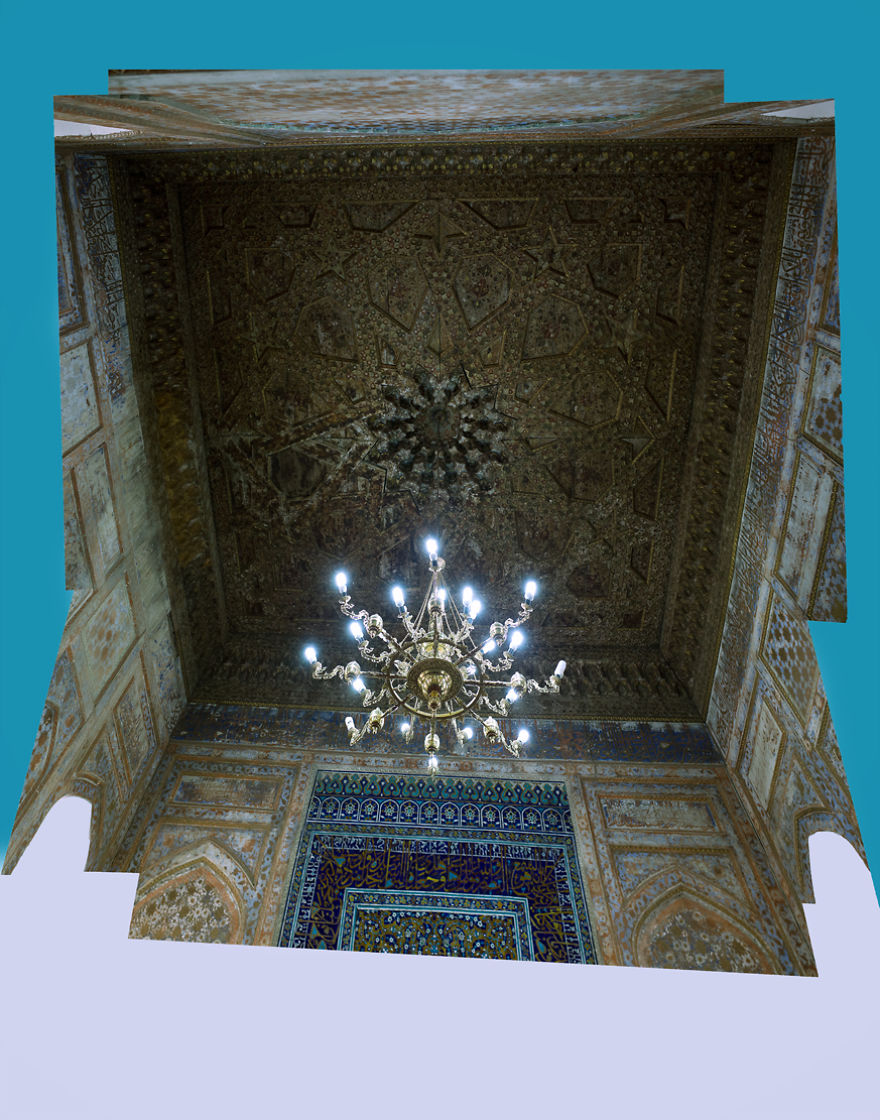
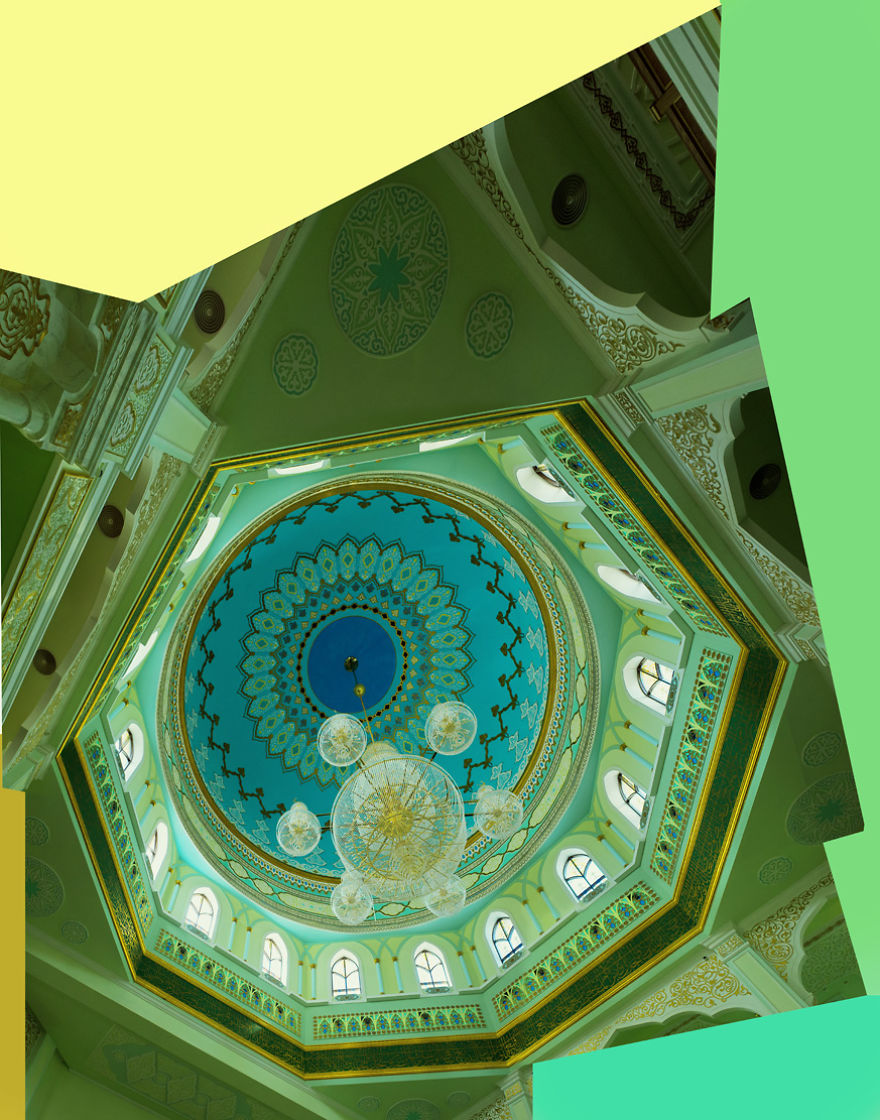
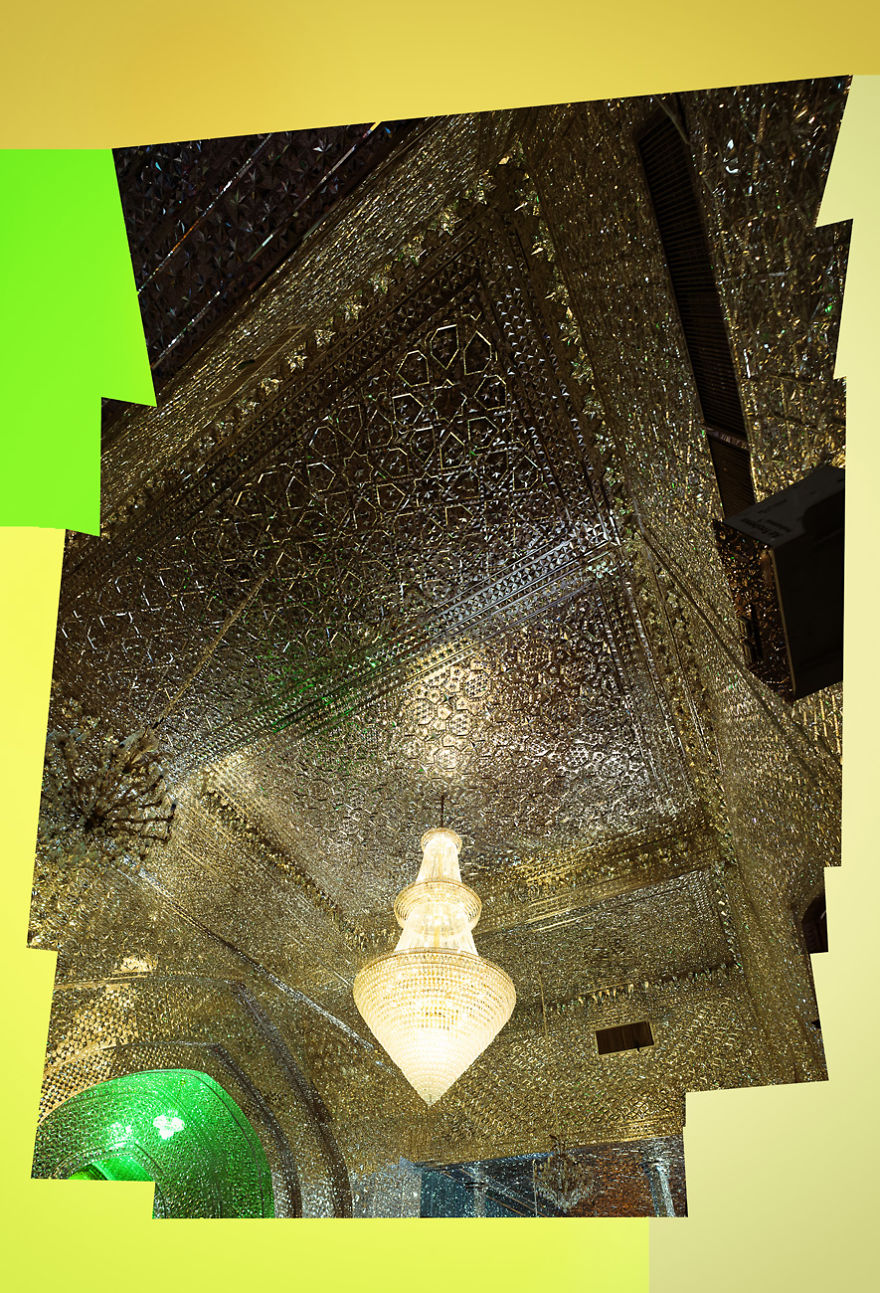
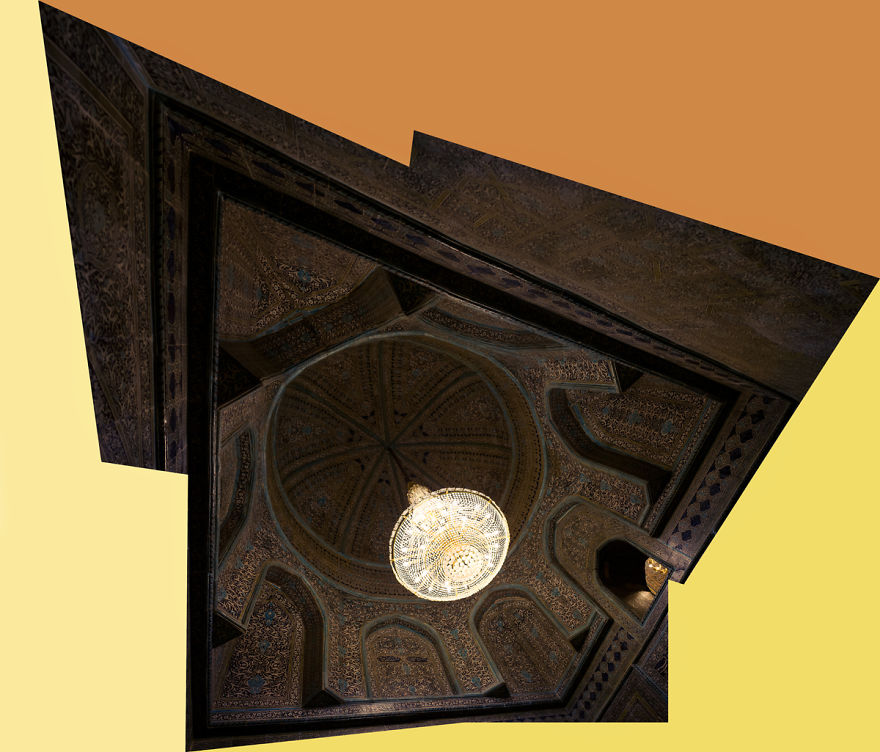
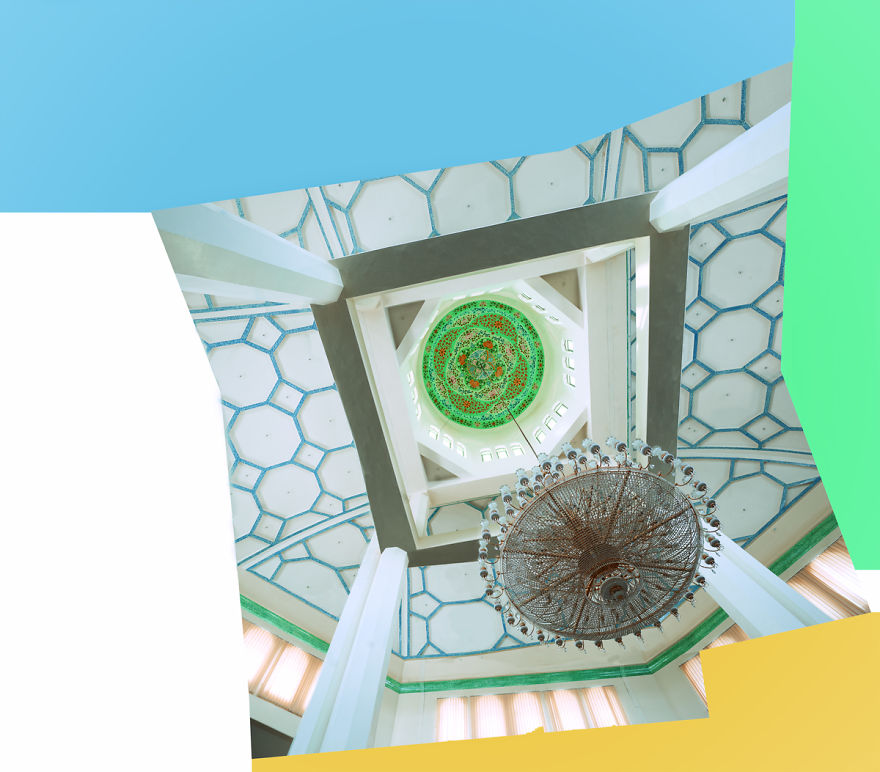
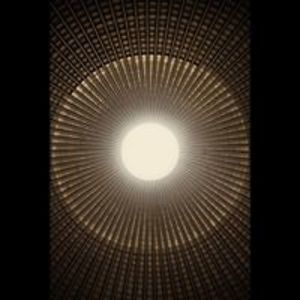



2
0